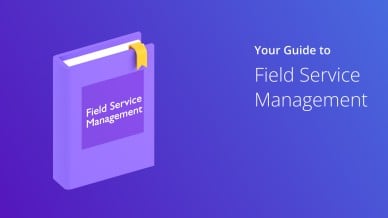Field service management is a Herculean task. You have to manage multiple levels of interaction, balance the workforce, meet customer expectations, and, most importantly, stay profitable. And when you have to manage such a huge task, you can easily end up making some common mistakes that can put your business at risk. That’s why you need trucking dispatch software.
Below are more details about the most common mistakes, and further information on how a route planning app can nullify them. Read on.
Mistake 1: Using Pen and Paper for Route Planning
Before doing anything else, you should consider the differences between running your operation with and without dispatch software. And if you still think manual route planning is apt for you, ask yourself the following questions:
- Can you guarantee that your routes are 100% accurate?
- Can you plan routes within a minute?
- Can you ensure that your field reps are following the routes properly?
- Can you ensure that your drivers don’t engage in road rage?
- Can you manage customer disputes efficiently?
If any of your answers are no, then your business is making an all too common mistake.
Trucking dispatch software will help you plan 100% accurate and well-optimized routes in 30 seconds, and the routes will be free from traffic, bad weather conditions, left turns, and so on. So you don’t need to spend hours planning routes and you’ll never again need to worry about making visits on time.
Mistake 2: Embracing the Wrong Trucking Dispatch Software
Many field service organizations already have business optimization software in place, but they still don’t experience any benefits, and thus it turns out to be expensive for them.
Most often, this will occur when you embrace the wrong multi-stop route planner, many of which only offer a limited number of features. For example, if you go for a route planner that doesn’t come with vehicle location tracking capabilities then you’re not getting the most out of this platform.
The best routing programs offer both route scheduling and vehicle tracking capabilities in one package, helping you get the best of both worlds. And if you choose to purchase these two software features separately, instead of opting for a combined package, it definitely won’t help your pocket.
Also, using legacy software can prove expensive, as it will inevitably come with a fixed price (no matter how many drivers or field reps you have) and lengthy contracts, and might require vehicles to have specialized equipment and command centers in order to work adequately.
So you would be well-advised to use a web-based map route planner, as this offers many benefits that’ll help you explore the fullest potential of route planner software, with the least amount of expense.
Here’s a quick rundown of the benefits:
- You can access it from anywhere and at any time;
- Zero installation is required as everything is based on the cloud;
- You’re offered a pay per usage pricing model;
- It is scalable;
- You can integrate it with other software;
- It offers automatic data backups.
Mistake 3: Expanding without Evaluating Your Capability
Every business wants to grow, but simply getting a new client on board is not going to make your business successful unless you are able to serve their needs to their satisfaction, and ultimately make them happy. So, you must evaluate your capabilities to take on a new client before expanding.
This also means that you need to figure out if a new client is worth taking on. Not all revenue is good revenue, as some service offerings may give you a smaller profit margin due to the complexity of the services required.
So before taking on more orders, ask yourself the following questions:
- Can you afford to hire more field reps or drivers, if necessary?
- How much extra time will it take your field service reps to service the new orders?
- How much profit will you make from each new order?
- How much will it cost, in terms of fuel expenses, employee wages, and so on, to visit more locations?
If you plan routes manually, you may find it difficult to answer these questions. And this is why you need scheduling software for service companies.
Want To See For Yourself How Route4Me Can Boost Your Profits?

Such schedule optimization software will help you create mock routes and add the relevant constraints (for example, the current gas prices and the hourly wages of the field service reps) for all new destinations. This will enable you to identify how long it’ll take for your field service reps to show up, how many field technicians you’ll need, and how much each route will cost. Access to such information will help you be much better prepared for expansion.
To top it all off, a multiple destination route planner also comes with a color coding feature that lets you prioritize your leads. With this feature, you can choose a color for each type of stop. For example, you could make your hot leads red and your cold leads blue. This’ll help you keep everything organized and convert more prospects into paying customers.
Mistake 4: Ignoring Data
Field service operations generate tons of data about employees, territories, routes, and assets. And if you don’t leverage the data to your advantage, you’ll miss out on valuable opportunities, and won’t be able to fix your loopholes. This is where trucking dispatch software can help.
Vehicle routing software comes with a reporting and analytics feature that:
- Gives you concrete information about how your operation is performing;
- Allows you to track expenses;
- Enables you to identify service bottlenecks and recurring problems so that you can plan a way to work around the problem; effectively refining your service delivery.
For example, a route optimizer app comes with an activity feed feature that displays all of the activities in your account, including the driver progress, note additions, and route modifications. Also, the fleet routing software provides you with detailed data about:
- The total distance covered against the planned distance;
- The stops made;
- The total time taken;
- The routes completed per day;
- The stops made per day;
- The average time spent on site against the allocated time;
- The total gas cost;
- The average trip gas cost.
Fleet mapping software even gives you the ability to set the fuel costs for the type of gas in a specific area, helping you track your expenses effectively. You can also use the timeline tool to view and analyze your fuel expenses for selected routes over a given period.
Mistake 5: Not Balancing the Workload
This is one of the biggest mistakes often made by field service organizations, and can be critical if you’re serious about employee safety and don’t want to anger your customers.
On the one hand, if you give field technicians too much work to do, they’ll have to drive recklessly to stay on schedule, which won’t be good for your business. Speeding not only increases the risk for your field reps, it also leads to legal hassles for your business in terms of road violations. And you’re then obliged to consider the expenses associated with such violations. Meanwhile, field service reps probably won’t even make it to every stop on time, which will inevitably upset some of your customers.
On the other hand, if you give field technicians too little to do, you’ll end up paying them to just sit around and do nothing, which will mostly cause a zero return on investment. Can you afford to waste money in this manner? If your employees work on commission, the lack of work can also cause a rift between your employees and you, as the idle workers won’t be able to earn as much commission as the other field technicians.
A routing program solves this problem. You just need to upload your list of customer addresses into the software, adjust a few parameters, and the trucking dispatch software will automatically distribute the workload equally among all your field service reps. This will ensure that all of your employees remain productive and are neither over nor underworked.
Mistake 6: Keeping Customers in the Dark
Your customers want to know what’s happening with their service, and may call you to find out when your field reps are going to show up. In that sense, accountability is a mark of effective customer service. But a lot of field service organizations fall short here. They’re busy with internal communication and end up leaving customers in the dark about technician whereabouts, job statuses or reasons for delays. Truck map software helps here as well.
The best route planners offer a dedicated customer portal feature that keeps customers up to date with the status of their inbound visits. For example, Route4Me comes with a customer portal that allows customers to log in to Route4Me, using a tracking number or their Account ID, to monitor the status of their inbound visits. You can even set limitations to the information that customers can see about their visits. For example, the estimated arrival times, the field rep’s identity, and the customer field can all be used.
In a nutshell, such a customer portal feature will not only ensure that your customers are up to date, but will also reduce the administrative and customer service burden of your organization.
Conclusion
Most customers don’t have enough patience for inefficiency and mistakes. Many even leave a service company simply due to one or two bad experiences, which doesn’t bode well if you make any of these mistakes. So if you want to stay ahead of your competitors, and keep your customers committed for longer, you need to think beyond delivering just a ‘fix’. You need to deliver excellence, which is only possible with the right tools, including trucking dispatch software.
So have you committed any of the mistakes mentioned in this article? Do you have any questions? Please feel free to leave your comments below.
Also, ask yourself the following questions to ensure that you understood the benefits and features of trucking dispatch software:
- How can trucking dispatch software ensure equal workload distribution?
- How does a dynamic routing tool help you evaluate your capability before an expansion?
- What benefits does cloud-based trucking dispatch software offer compared to legacy software?
Want To See For Yourself How Route4Me Can Boost Your Profits?




